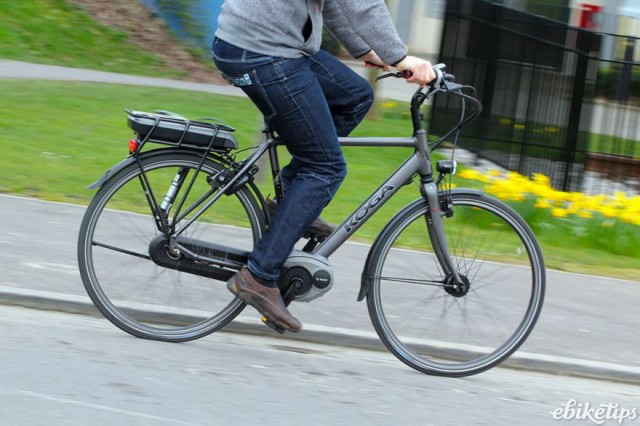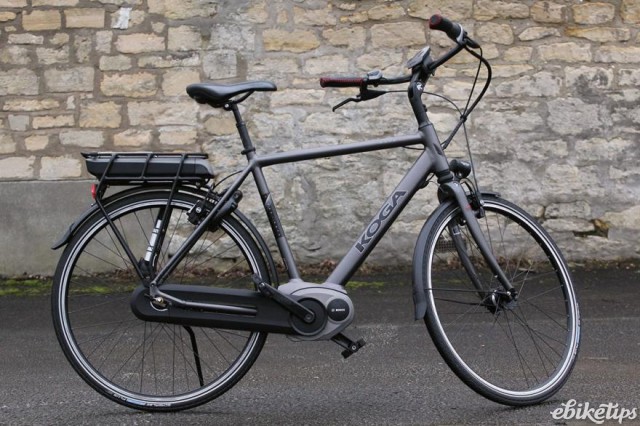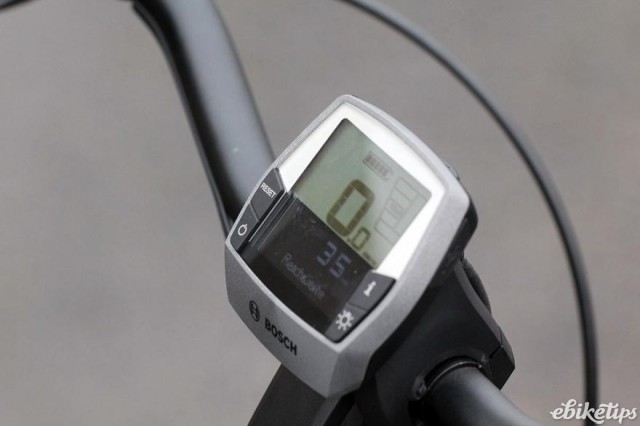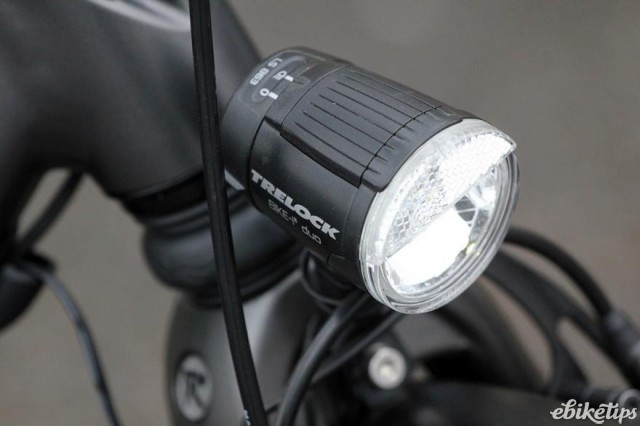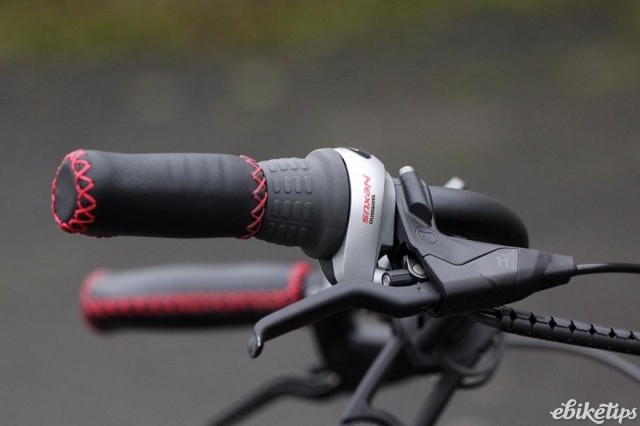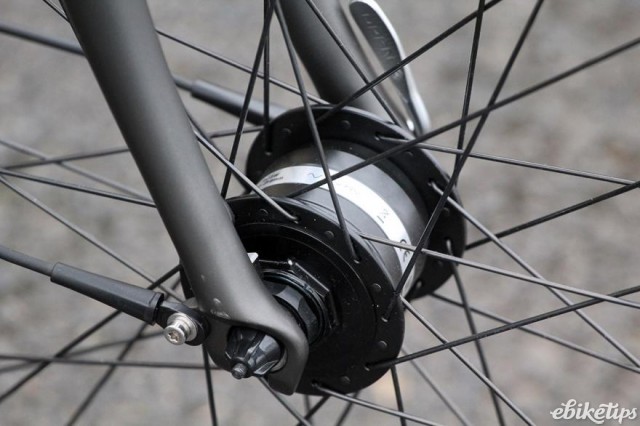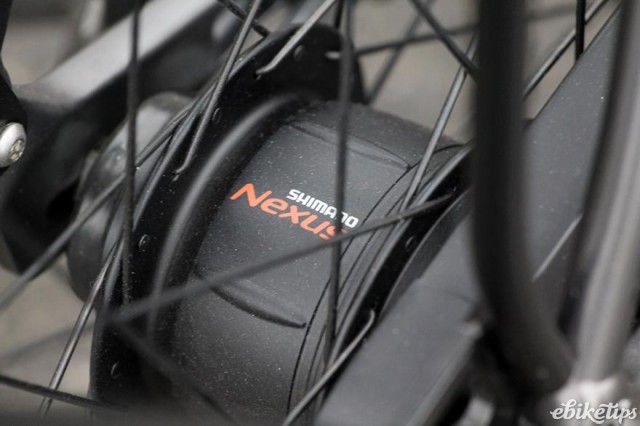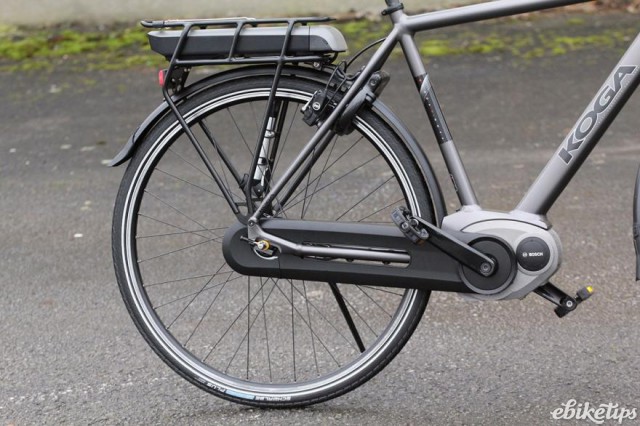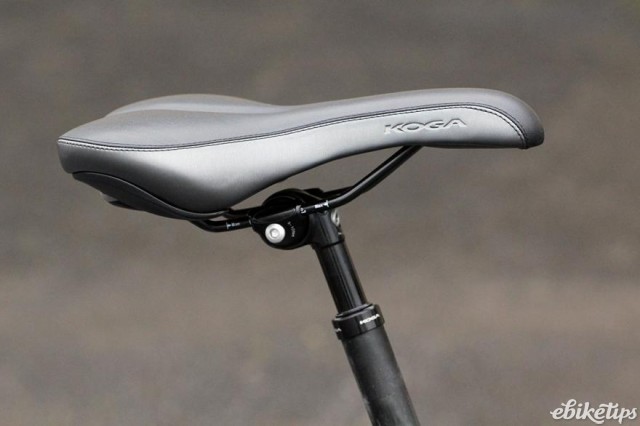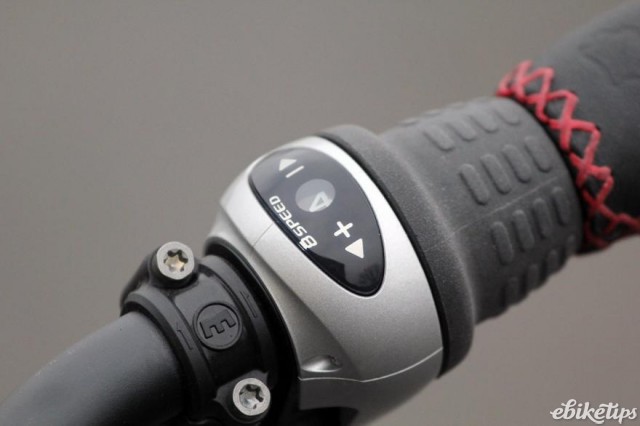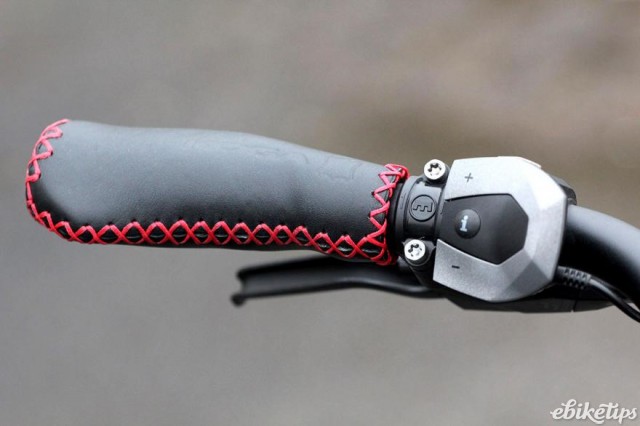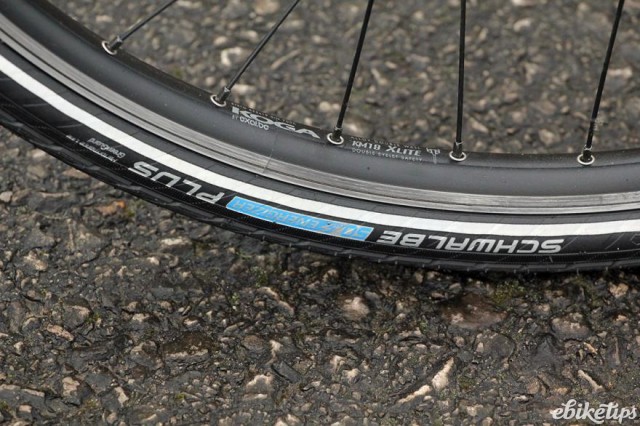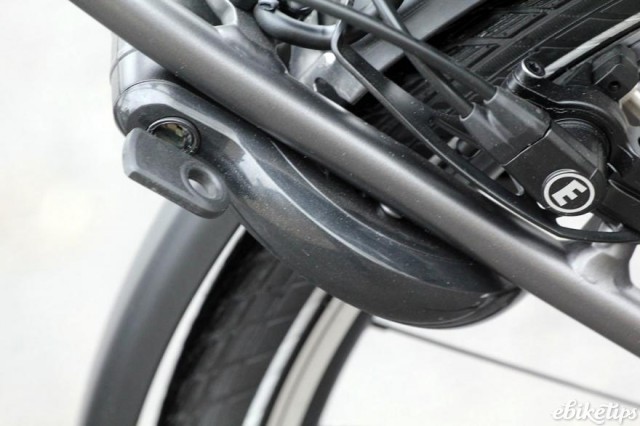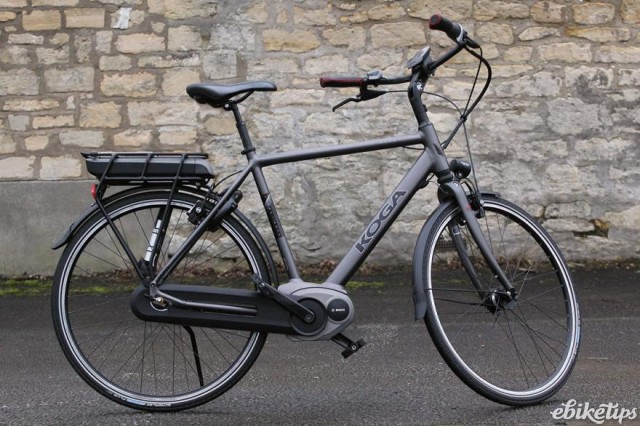Koga e-Nova RT
Overview
- High quality build
- Excellent motor
- Comfortable contact points
- Would be better with disc brakes
- Hub doesn't shift well under power
Koga's E-Nova RT is a great vehicle for getting around with consummate ease. It does a fantastic job of flattening out the topography to make any journey cycle-friendly. The Bosch drivetrain is excellent, and the whole bike oozes quality. It's expensive, and there are some esoteric component choices, but overall this e-bike is a joy to pilot about town and could be a genuine alternative to a second car depending on your circumstances.
Koga's e-bike range concentrates on the upper end of the market. Across the channel, where electric bikes are much better established and the average spend on an e-bike much higher, a lot of bikes in the £2-3k price bracket get sold. Talking to electric bike dealers at a recent bike show it's clear that we Brits aren't prepared to fork out anywhere near as much on a regular basis, at least not for now.
That's probably because cycling is still very much pigeonholed as a leisure activity rather than a viable transport option over here. Two and a half grand is a lot when you're thinking about popping out to the pub of a weekend, less so when you're considering how you'll get to work every day.
Anyway, that price tag gets you plenty of bike. The frame itself is 6061 aluminium alloy and it's very nicely made and finished, with smooth welds and a gun-metal paint job that's smart and tough. The fork is also alloy and the E-Nova uses Koga's feathershock system which is similar to Cannondale's Headshok in that the fork crown and blades are a single rigid structure but they're suspended by a mechanism within the head tube. It doesn't offer much in the way of travel but it's very neat.
Bolted to where you'd normally expect to find the bottom bracket is Bosch's latest generation motor. The bottom bracket unit contains the motor and three sensors monitor your pedal input and match it with a push from the motor. This happens up to 1,000 times a second apparently, although I'm not sure a city e-bike really requires that level of precision.
The motor can supply up to 50Nm of torque and it's powered by a 400Wh Lithium-ion battery that sits within the rear rack. Controlling the power, and checking your stats, is all done via the Bosch Intuvia display which is mounted centrally on the bars. There's a big speedo, an assistance indicator that shows you how much the motor is helping, a battery level indicator and a display that'll show you trip distance, range under power, time, odometer, average and maximum speeds '' the usual computer stuff.
The Intuvia display also shows what level of assistance you're on. You can turn the motor off completely, or choose from four assistance modes: Eco, Tour, Sport and Turbo. No prizes for guessing which one's most powerful. Like all non-licensed electric bikes the E-Nova is able to assist you with a maximum of 250W of power up to a maximum speed of 25kph; after that you're on your own. Changing the power level and the displayed info is a simple matter of pressing the buttons on the remote that sits next to your left hand; that also features a 'walk' button that'll power the bike along when you're walking with it to take your mind off the fact that it weighs 25kg.
Your position on the Koga is upright, thanks to a high front end and swept bars that culminate in some excellent ergonomic leather grips. The stem is adjustable through a fairly wide range of positions and the single-bolt design is very neat. A comfort saddle takes your behind and that's mounted on a suspension seatpost.
Gearing-wise the E-Nova sports a Nexus eight-speed hub with the chain running in a fully-enclosed chain case. It also has a coaster brake, which supplements the Magura HS-11 hydraulic rim brakes. Lighting is provided by a Trelock front and Spanninga rear, running from a Shimano dynohub. You get a nurse's lock, mudguards and a stand.
All in all it's a good-looking city bike. The motor and battery are unobtrusive and Koga have gone to some lengths to tidy away all the cables; the result is a clean look that needs a double take to spot it's electric. I had the 57cm men's model which was fine for me (1.90m), if you're a true giant there's a 60cm frame too as well as a 54cm and women's bikes with a step through frame running from 47cm to 59cm.
I've still yet to find a system that's as polished as the Bosch mid motor. It's really very good indeed. The application of power is never jumpy or choppy, just a constant and helpful assistance. Changing modes is simple and quick; that means sticking it in Turbo for a quick getaway from the lights is a job you can do without even looking.
The hub gears, which allow you to change gear when stationary, are also a real boon around town. No more getting stuck at the lights in the wrong gear. On top of that the full mudguards and full chain case mean that you can ride in your normal clothes, and you'd feel pretty odd aboard the E-Nova in anything else. Riding the bike makes for lordly progress. It sits you up and it's comfy and stable, with the contact points (especially the excellent grips) just right for shorter journeys.
Range-wise, when we rolled the E-Nova out of its box, fresh from the Netherlands, it suggested that we might get over 100km from one charge on Eco mode. Ha! Then we showed it Bloomfield Road a few times, and now it's a lot more circumspect about how far you might be able to go under power.
The system tracks your usage and adjusts its forecasts accordingly, but if you spend a big percentage of your time going uphill, as I do, it's fairly pessimistic, which I guess is better than it being optimistic. Now when it's fully charged the bike states the range on Eco as 45km or so, less on higher power modes.
In practice I'm getting 35-40km out of a full charge, although I never let the charge run down to zero as there's no need. Three times down the big hill into work and back up the big hill (approx 20km in total) is enough to deplete the battery to a point where I'd be plugging it in again. You can charge the bike with the battery in situ, or it's simple to release it and bring the battery inside if the bike lives in the shed/garage.
I'm over 90kg and it's a big hill, so 35-40km is basically a worst case scenario unless your commute is up the Tourmalet or something. If you live in Cambridge and you weigh half what I do, you'll probably get close to three figures out of one charge, assuming you use Eco mode most of the time. I found I didn't need the range, so defaulted to Sport mode because it's more fun. If you're heavy, or unfit and in need of higher levels of assistance, and you have a long and hilly commute, then it's possible that you could run out of charge before you got home. But you'd have to think of a fairly specific set of circumstances where you'd need to charge the Koga more than once a day.
To fully put to bed the notion that you'd be better off on a lighter bike than this heavy old thing with its battery and motor weighing you down, consider this: I'm able, aboard the Koga, to do my commute home (3km at an average 5% climb), in my jeans and jumper, three minutes quicker than I can on my road bike. And that's without even breaking a sweat, just pootling up the hill under power, whereas on the road bike it's a pretty tough climb. Not that the Koga, or any electric bike, is really about going fast. The motor cuts out at 25kph and that's as fast as you'd really want to go anyway on this thing. On the flat I was no quicker than usual. In a lot of instances I was slower. But what you're able to do aboard this bike is make those journeys in normal clothes with minimal effort.
I popped my back last June, a prolapsed L5/S1 disc in my lower spine. Then I did it again in August, and then again, in January, at which point I spent a couple of weeks in bed and decided that I'd better take it a bit easier on the old recovery front. The nerve damage caused by the prolapse meant i didn't have full muscle function or extension in my left leg, so I couldn't really ride a normal bike. I could ride this one though. So I was able to continue cycling.
Now I'm more or less mended, I don't really need to ride an electric bike down the hill when I'm capable of getting back up it under my own steam. But I'll miss the Koga, because if I'm just going into the office rather than on a ride, and I'll just be coming straight home, it means I can forget about changing and sweating and all those things and just ride down, and ride home. I know plenty of people in Bath, which is pretty topographically challenged, that would love to ride to work, but can't because they don't want to walk home up one of the city's many long and challenging hills. This bike could be for them, or for anyone who's not physically capable of whatever commute they have, be it one with hills, or one that's just a bit long to make a bike an option for them.
Lots of people can benefit from riding an e-bike that simply wouldn't consider a non-powered one. There's plenty for whom a good electric bike might be a realistic alternative to a second car. Given that scenario, the asking price of £2,500 suddenly doesn't seem all that steep. Cars are expected to depreciate by at least £500 a year. you'll probably put £500 of fuel in it even if you're just doing a short commute. Then it's another, say, £400 to insure, and then there's your vehicle duty, another £100+, and the MOT, and the servicing, and the parking, and suddenly you've spent a couple of grand in a year and the bike, which costs about 5p to charge, starts to look like quite an appealing option for the long term.
I wouldn't say the Koga is perfect. I know that Magura's HS-11 hydraulic rim brakes have a big and loyal following over on the continent. But why would you spec them when hydraulic disc brakes are so cheap? A set of Shimano Deore hydraulics would offer better braking, and they wouldn't be wearing your rims out and depositing black brake block gunk on the chain case when the going gets a bit wet either. Koga do a similar bike to this, the E-lement, with discs and a derailleur transmission. But the hub makes sense in town and the derailleur drivetrain isn't fully enclosed.
In any case the HS-11s make a good enough job of stopping the bike that the coaster brake on the hub is almost entirely redundant. It would be completely redundant with discs, which would mean you could get your pedals into start position at the lights more easily, which would be a bonus.
The Nexus hub isn't my favourite; my main bugbear is that when you're applying power it has a tendency to stick in gear when you're attempting to change down. This is exacerbated by the motor which effectively smooths out your pedal stroke so you're constantly applying pressure. To get it to shift reliably, you really need to back off. Not a major issue, just something you need to adjust to. Eight gears is more than you need, too. I rarely went below 2 even on the steep stuff and never went above 6 on the flat as that's a comfy gear for 25kph.
Overall though the E-Nova performs very well and is the complete package for anyone wanting a good quality city e-bike. If you're looking at it as a long-term investment for commuting then the up-front cost is easier to swallow if you're comparing it to the cost of a car or a season ticket. The Bosch motor system is the best I've tried and the rest of the components should give you years of service.
